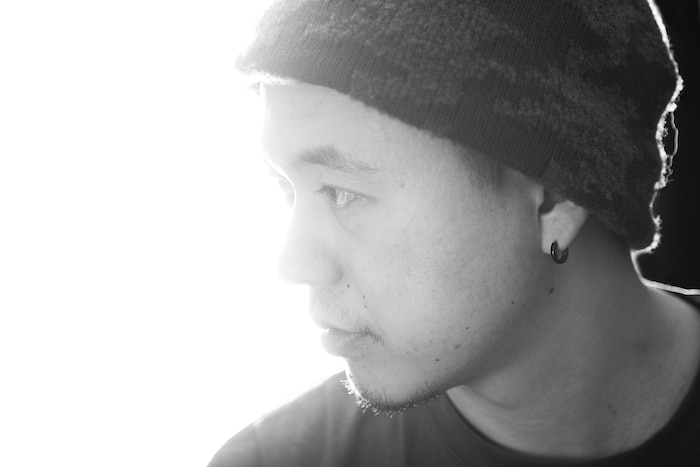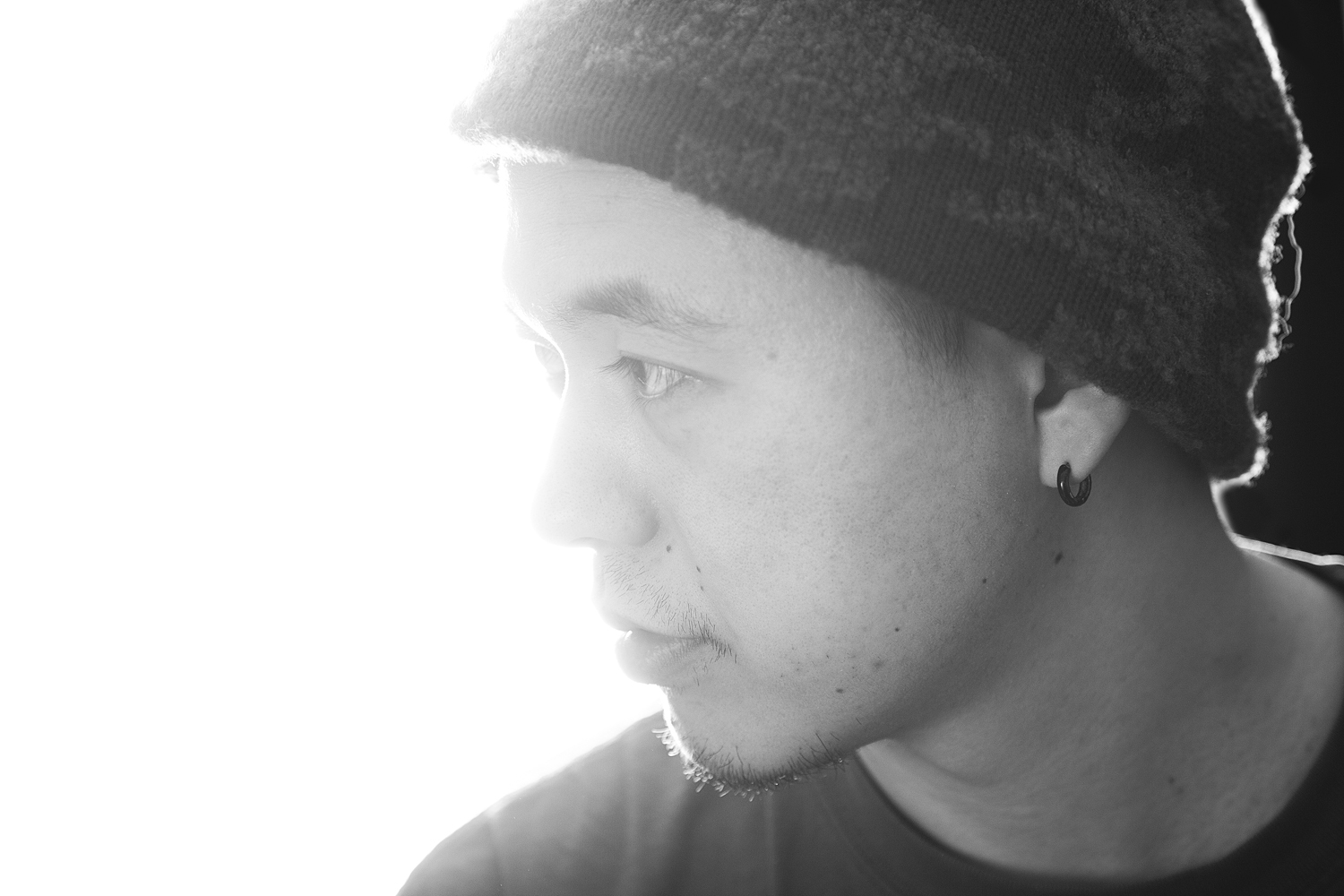Ena: Balance and Dissonance
The Japanese producer talks to Brian Durr about finding equilibrium between mainstream J-Pop and experimental electronic music

Palpitating percussion ricochets in thirds with a mid-tempo thump; minor key synth pads permeate the cracks left between kick drums like smoke hanging in a musty basement. This track, titled “Waft” and taken from Ena’s Distillation EP on Latency Recordings, is chamber music filtered through a lifetime of soundsystem culture. The Japanese producer says he’s emphasized such polyrhythms and the power of harmonics for his latest material. “Half notes have strong waves and quarter notes do too,” he explains. “For example, there are so many ways to voice a C-major 7 chord; wide voicing or closed voicing. Half notes are important to me for the dissonance. Cluster chords, with distortion or fuzz sound, like the kind that Jimi Hendrix would play, have strong waves. I’m using a lot of these techniques for my own productions but with bass, drums or noise instead of traditional chords.”
Ena has been working as a producer and DJ in Tokyo for over a decade. He’s been an integral part of the city’s early adoption of U.K. soundsystem styles and has released on several forward-thinking labels such as 7even Recordings and Samurai Horo. While dead center of an emerging group of like-minded experimental producers such as Sam KDC, Fis and ASC, Ena splits his efforts between his own productions and writing for some of Japan’s biggest J-Pop and idol groups. How exactly does one manage to make a pristine Top 40-charting J-Pop hit that soundtracks thousands of teenage girls’ lives during the day, and then craft progressive electronic music by night? It comes down to a profound sense of balance that permeates Ena’s life, and an omnipresent dissonance lying just beneath the surface.
I met Ena at his home studio on a warm April morning to get some insight into his unique approach, utilizing traditional theory and songwriting for his work on one side of the music industry while disregarding the same notions for the other. His studio has such an amiable energy that the space feels like an autonomous creative entity of its own: Incense burns on a tabletop across from a stack of Akai S01 samplers, a Juno 60 stands against a wall of record shelves and PMC monitors stand atop concrete blocks stacked on a varnished wood floor.
His house is tucked away on a winding corner in a residential city of western Tokyo, and this particular neighborhood has an interesting history dating back to just after World War II. The Asahi Shimbun newspaper, a highly regarded Japanese daily paper, has historically been the far-left and liberal voice in the often-muted Japanese media. A large number of the Asahi Shimbun’s employees and supporters took up residency here after the war alongside an equally-sized affluent community, one that generally adhered to far more conservative outlook on Japan’s political and social matters. Despite the seemingly contentious neighborhood pairing, Ena says the area has a pleasant demeanor, a rarity throughout the sprawling metropolis of Tokyo. And much like this area in which he grew up, Ena’s musical output is defined by distinctive and unexpected harmony.
“Chart and commercial music is being made by the marketing teams,” he says. “It’s not the artist, just the industry. Analyze, analyze, analyze and then, ‘Ah, we should make this kind of music!’”
Ena grew up in a musical household, with his mother a pianist, his grandfather a violinist and his father an avid jazz fan. Ena himself began studying music at age 12 by picking up the guitar. Although it was the mid-’90s and the age of the guitar god was at its peak, Ena cites Hendrix, Ritchie Blackmore and Jimmy Page as heroes on a “cool factor” level, while also rating Yngwie Malmsteen and Steve Vai as inspirations based on their profound technical abilities.
The client list that Ena has written, recorded and produced for here in Japan is staggering. Some of his recent work includes an all-girl group harmonizing over X-Japan style pop-metal, a somber piano ballad written for a non-profit PSA and a commercial jingle in a bossa nova-meets-traditional Japanese shamisen piece. Many of the artists and groups he’s worked with have enjoyed multiple Top 20 hits, sold out stadiums across the country and are perceived as the elite of the worldwide J-Pop industry.
Ena explained that his writing process for these kind of clients don’t usually need to be boundary-pushing, because the pop music machine in Japan runs perfectly well on reiterated material and strategy. “Chart and commercial music is being made by the marketing teams,” he says. “It’s not the artist, just the industry. Analyze, analyze, analyze and then, ‘Ah, we should make this kind of music!’ And ‘We have to release on this day.’ I know so many Japanese composers that had a dream when they started but [along the way] they forgot about their passion.”
That’s not to say that Ena hasn’t tried to inject some of the passion from the other side of his musical life into the J-Pop world. A few years back he tried to add sub-bass to a J-Pop client’s new single, which was subsequently cut during the mixing stage. When asking why the engineer of the mixing session had done away with the sub altogether, Ena was told it was just “too cool” to be in the song. Aside from the artists in the J-Pop world not exactly being keen to meditate on bass weight, Ena explains that most studios in Japan just aren’t equipped to service much low-end production work: “One of the problems in Japanese studios is that their monitors don’t have the capabilities for low frequencies. Still they’re using Yamaha NS-10M monitors without any sub. So basically they cannot listen below 60Hz. It’s crazy – when you listen to some of the biggest J-Pop artists’ material it sounds completely harsh.”
When I was listening to drum & bass in ’90s, their music was really intelligent. But the DJs and producers weren’t classically trained musicians; they came from street and underground culture. I like this balance.
Being a musical polymath is no small feat on its own, but it’s clear that Ena thoroughly enjoys being a student of songwriting and theory to this day. “I think the musician, producer has to think of it like a sport. Especially playing an instrument is like a sport,” he says. “We have to do the training – the practice, the muscle development, is important. And for production it’s the same. If you know about composition and theory it’s easy to make music. It’s kind of the sports side and I think it’s really important. And at the same time so many producers don’t have that training.”
After playing several successful shows in Portugal and Berlin in 2015, Ena’s artistic goals have shifted towards being something of a classical musician. Of course, he says, it’s not “classical” in the usual sense of the word. “The last time I played in Portugal, on the Madeira island, it was kind of art, not a dance music festival, but classical or jazz or something. I got a really good response from them and had a good connection with them. So I think that kind of music is my new stage. I still like dance music, but sometimes I feel dance music is kind of not open-minded.”
An early observation of the dichotomy occurring during the formative years of jungle and drum & bass in the U.K. left a lasting and symbolic impression: “When I was listening to drum & bass in ’90s, their music was really intelligent. But the DJs and producers weren’t classically trained musicians; they came from street and underground culture. I like this balance. I think if I’m just following the crowd when DJing or producing, it’s kind of the same way as working with a client [for commercial music]. Just the client is different.”
Ena’s latest material has plunged deeper into the exploration of polyrhythms, space, texture and harmonics. On the 749 EP, a collaboration with Berlin’s Felix K, tracks hum and crackle with droning, itinerant precision. Organically industrial soundscapes meld onto thoughts of techno and jungle like an alien symbiote forever altering its host’s DNA.
The balance of working in two diametrically opposed sides of the music industry has served Ena well thus far, and he doesn’t foresee any need to switch up the distribution of client work versus his own productions anytime soon. Summarizing his current position between two vastly different worlds of musical styles, Ena says that “I think I should keep this balance as it is now, because sometimes the job side of music gives me some fresh ideas and skills. Normally, people who want to be an artist would like their own music to be the main job, but I don’t really think so. I want to keep both sides – actually, I like both and I need both.”
